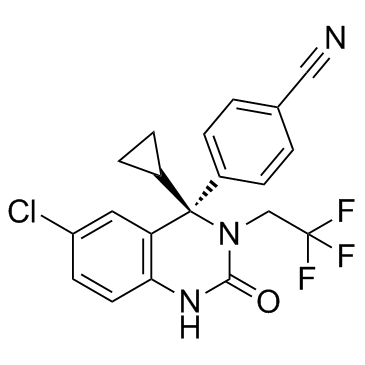TTA-Q6 |
| Katalog-Nr.GC30950 |
TTA-Q6 dient als selektiver Antagonist für den T-Typ-Ca2+-Kanal und findet Anwendung in der neurologischen Forschung.
Products are for research use only. Not for human use. We do not sell to patients.

Cas No.: 910484-28-5
Sample solution is provided at 25 µL, 10mM.
TTA-Q6 is a selective antagonist of T-type Ca2+ channel and can be used in neurological research[1].
TTA-Q6 displayed good overall profiles and were examined in several in vivo assays responsive to T-type calcium channel antagonists. It showed robust inhibition of seizures in the WAG/Rij epilepsy model after oral dosing at 3 mg/kg. A 10 mg/kg dose of TTA-Q6 to rats right before their sleep period produced a further suppression of active wake for 0.5-2 h after dosing[2]. TTA-Q6 dose-dependently reduced amphetamine-induced psychomotor activity[3].
References:
[1]: Schlegel KA, Yang ZQ, et,al.Discovery and expanded SAR of 4,4-disubstituted quinazolin-2-ones as potent T-type calcium channel antagonists. Bioorg Med Chem Lett. 2010 Sep 1;20(17):5147-52. doi: 10.1016/j.bmcl.2010.07.010. Epub 2010 Jul 8. PMID: 20673719.
[2]: Barrow JC, Rittle KE, et,al. Discovery of 4,4-Disubstituted Quinazolin-2-ones as T-Type Calcium Channel Antagonists. ACS Med Chem Lett. 2010 Feb 1;1(2):75-9. doi: 10.1021/ml100004r. PMID: 24900180; PMCID: PMC4007971.
[3]: Uslaner JM, Smith SM, et,al. T-type calcium channel antagonism produces antipsychotic-like effects and reduces stimulant-induced glutamate release in the nucleus accumbens of rats. Neuropharmacology. 2012 Mar;62(3):1413-21. doi: 10.1016/j.neuropharm.2010.11.015. Epub 2010 Nov 24. PMID: 21110986.
Average Rating: 5 (Based on Reviews and 34 reference(s) in Google Scholar.)
GLPBIO products are for RESEARCH USE ONLY. Please make sure your review or question is research based.
Required fields are marked with *




















